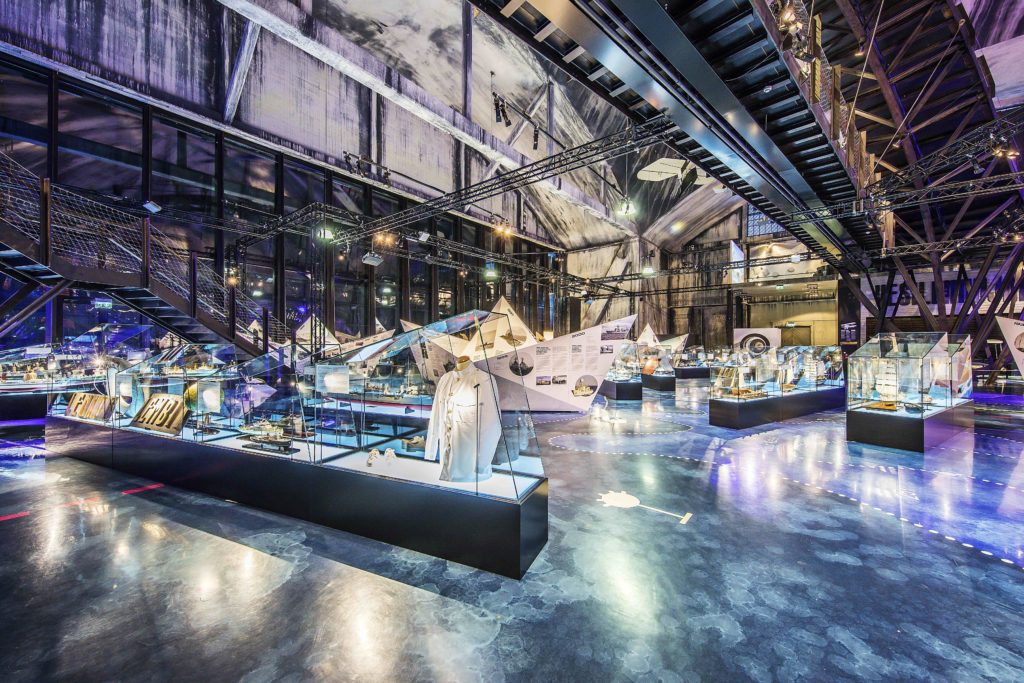The exhibition is aesthetically pleasing – its open concept, large light coloured “paper boats” and the shimmering light enrapture you as soon as you walk into the museum. Children study the model ships in detail and imagine themselves moving around on them. It’s great that the icebreaker Suur Tõll, which is represented by a model at the exhibition, is itself located at the Seaplane Harbour marina and is also open to visitors.
Herman Miller, Maritime Museum customer service director
HOW TO DRAW ATTENTION in a room that contains a life-sized submarine? Where you can’t use the wall surfaces and it’s dim like in a diver’s dream. Since this is a ship exhibition featuring 100 ships important to Estonia, our thoughts turned to the idea of larger-than-life paper ships –
their white silhouettes catch the eye from a distance and they are distinct from the other items in the museum.
THE EXHIBITION IS ACCESSED from the second floor, and thus the first general impression comes from above. The ships are composed in different directions to leave an unarranged impression. Taking the theme further, it also suggests the motif of the “white ship” that Estonians yearned for, as they gazed across the water hopefully. At the same time, we also considered the photogenic qualities of the paper ships – pictures shared on social media would also help disseminate the message of the exhibition. The possibility of climbing aboard some ships, like we imagined in our competition entry, would also have given people reason to take pictures. Yet it turned out that the engineering solution would be too expensive for ensuring visitor safety.
THE MANUFACTURER was helpful in developing the sheet metal ships; they made the calculations as the work progressed. It also had to be possible to assemble and transport the ships.
The museum’s technicians prepared a 1:1 cardboard model and we pondered how to install the necessary texts in relation to the model. We discovered that if you peeked across the gunwales, texts could be read from inside the ships as well. It was important that the positioning of the text leave an impression as if the ships were indeed made from newspapers. I myself had to fold quite a few newspapers to illustrate what the end result should look like.
Some moving images were projected on to the ships as round bubbles-illuminators.
THE EXHIBIT ALSO INCLUDES showcases in six sizes – these had to house exhibits such as the captain’s uniforms and two-metre ship models. The showcases, lighted from below, create the visual effect of waves between the giant paper ships.
THE HARDEST PART was not to lose sight of the original idea – you have the concept in your head; even in your sleep you see what the exhibition could be like. To keep the vision from slipping away, you have to make compromises in a very clever way.
What will become of the ships when the exhibition is over? Perhaps it will be possible to use them in the urban space, in some marina? It would be a shame if they were destined for the metal crusher.
Janno Roos, Andres Labi
Ruumipilt 2018

















































































































































































































